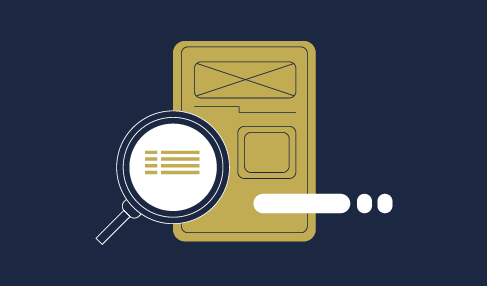UX is more than the sum of UI components + design: the actual UI technology is the final piece. Empathy is the starting point.
The UI is the interface to your site/app/product/widget/service. UI components can be well documented and well understood (APIs, documentation, etc.). But, the humans using the interface are neither well documented nor understood – there isn’t a standard Human API. Every individual visiting your site is different – they will perceive your site and messages differently, and also react differently. Even the same human user can respond very differently from one visit to the next, depending on their context.
Context for human users is largely associated with our emotional state – a good night’s sleep, low-stress-level life and personal events, and the reason for visiting your site in the first place. If you’re designing a site for luxury users, the messaging as well as the look and feel of your site will be different than if you are providing background checks for employment. In the first case, your users are likely to be at ease, and don’t have much at stake in what you provide. In the latter case, their financial and emotional well-being might be at stake!
Thus, we must rely on showing empathy and considering the context of the user in order to help us design the user interface and deliver an effective user experience. An effective user experience will leave the user/customer in a higher emotional state than they began with. If the user feels frustrated or blocked by the experience, they are unlikely to return, and even more unlikely to recommend your product/service to others.
UX doesn’t stop at the website. UX includes marketing collateral, sales
Interactions, and above all, customer support. Together, these form the overall user experience – each touchpoint leaves a (potential) customer/user in a certain emotional state. Disjointed and inconsistent experiences create a confusing set of emotions for your users. As humans, we are more likely to revisit experiences that elevate our emotional state rather than those that leave us confused or unfulfilled.
## Introduction
UX is only one part of the overall customer experience (CX). Their experience is the aggregation of all touchpoints that your customers have with your organization: ads, marketing, sales presentations and collateral, UI, and customer support. Although most of these are outside the scope of this present article, it is worth noting that an effective CX strategy must take an empathy-first approach. An effective UX strategy also must take an empathy-first approach.
## Emotions are everything
The difference between the two scenarios seems even greater when we consider the range of the end user’s emotional context. It is unlikely that a potential purchaser of a luxury car will be acting in haste. On the other hand, someone looking at mass transit schedules may well be in a haste to get to work, to get to the hospital to see a loved one, or to make it to a job interview on time. Any number of scenarios is likely.
The “happy path” would be a generic user looking to search for the right transit options. The “empathy path” demands that we consider the emotional state of that user. This is different from simply “getting out of their way”. Rather, it necessitates an understanding of the cognitive facilities of the human brain under different stress conditions. A person feeling hasty or worried or anxious needs clear, concise, and calm guidance to get to their goal. This means minimizing distractions and shortening the path to the goal. Calls to action must be very clear, and choices must be limited, so as not to overwhelm the user.
Consider fire alarms and fire extinguishers. Both are designed for an
emotionally-heightened user to be able to find a solution to their urgent, even life-threatening problem. The fire alarm’s lever-pull UI is the simplest. Under “normal” circumstances, the instructions and wording make it clear not to pull the lever, and also warn of the consequences (e.g., ink on hands). Under heightened circumstances, those consequences make no difference: the lever will be pulled and it will activate the alarm. In the case of a fire extinguisher (“break glass”) – again under normal circumstances – people are unlikely to randomly break the glass casing. However, under heightened circumstances, breaking the glass is a trivial task that is easily accomplished.
Emotions are everything,
## UI and HAPIness
Unlike well-designed APIs, the human API (HAPI) is not well documented: human beings are not so easily understood or predicted. It can be hard to anticipate the exact predicament of all of your users, but some care must be taken in order to research the empathy path of your users and customers.
Your app may not serve a life and death situation such as those discussed above, but it is still crucial to consider humans under heightened emotionally stressful situations, especially when your app is causing them emotions. The best customer support is provided by people who empathize with the caller and remain calm while moving toward a mutually beneficial solution. Similarly, the best app considers the user, and directs them through an emotionally appropriate and mutually beneficial experience. A happy user is your best marketing tool; after all, word-of-mouth advertising beats all other forms, bar none. Empathy is the way to begin decoding the human API and garner happy users.





